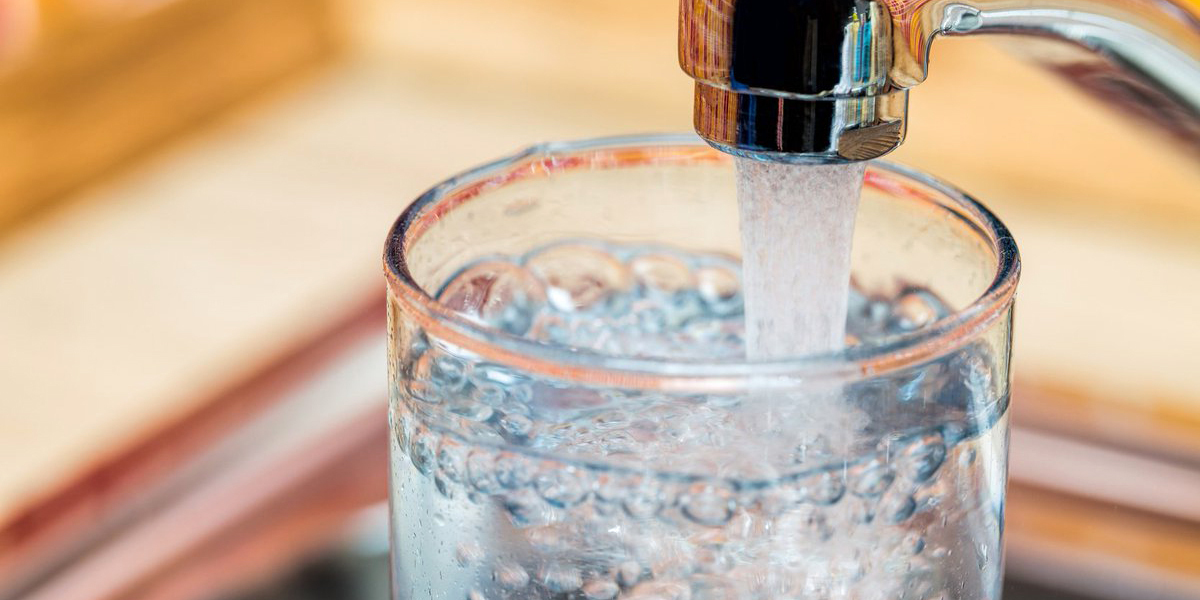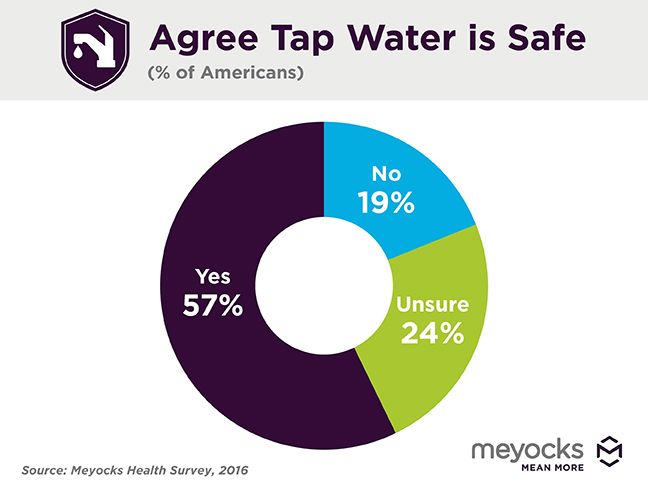

Tap water in the U.S. is generally safe to drink. At least that’s what we are told by medical professionals and government agencies. The U.S. Environmental Protection Agency (EPA), which regulates public drinking water, aims to “ensure and protect the quality of Americans’ drinking water” under the Safe Drinking Water Act, established in 1974. Reports say that some 92 percent of tap water meets state and federal standards and that the U.S. has the cleanest and safest public water supply in the world.
But tell that to the residents of Flint, Michigan, who drank lead-laced water for more than a year, even though officials in Gov. Rick Snyder’s administration knew about its toxicity. Or the 3,000 areas nationwide facing lead poisoning rates worse than Flint. Or the 218 million Americans unwittingly drinking chromium-6 (the carcinogenic “Erin Brockovich” chemical) right from their faucets.
https://twitter.com/EcoWatch/status/811586805569126400
For these reasons and many more, is it any surprise that many Americans are questioning the safety of their drinking water despite decades of assurances from experts and government officials?
A recent survey from Iowa-based marketing firm Meyocks found that only three out of five Americans (57 percent) agree that their tap water is safe. But the nationwide survey of 1,006 adults also revealed that about one in five Americans (19 percent) disagree that their tap water is safe and 24 percent are unsure.

So how do you know if your water is safe to drink? For the most part, America’s drinking water is pulled from groundwater or surface water sources and treated at plants to federal and state purity levels before arriving to your tap.
Unless you have a private well, the best way to find out if the water flowing from your faucet is safe is by searching the EPA database and finding your local water supplier’s Consumer Confidence Report or CCR. This annual drinking water quality report, which your supplier must complete by July 1 of each year, includes information on where your water comes from, the levels of detected contaminants and your supplier’s compliance with drinking water rules.
For instance, take the CCR for Georgetown County, South Carolina, where I currently live. After sampling results for nearly 100 substances and elements regulated by the Safe Drinking Water Act, my local water supplier determined that the county’s water is “healthy, safe, high quality and exceeded all state and federal health and safety standards.”
While Georgetown’s CCR reported trace amounts of contaminants, note that all drinking water—yes, even the bottled stuff—often contains minor traces of some contaminants. The EPA’s National Primary Drinking Water Regulations table has set Maximum Contaminant Levels (MCL) for contaminants allowed in public water sources.
Contaminants are not necessarily harmful to healthy people, but some groups of people can be more vulnerable to polluted water, such as infants, children and pregnant women or cancer patients undergoing chemotherapy, transplant patients or people with HIV/AIDS.
For those of you who are still uncertain or do not trust your CCR—and given the water disasters in Flint and numerous other cities, that’s understandable—contact your water supplier or the local health department for further testing options. You can also have your drinking water tested by contacting a laboratory certified by your state or territory.
read page 1
DIY water test kits can be easily bought online and range in cost from $20 and up to $150. The lower priced versions detect the most common drinking water contaminants such as iron, copper, lead, bacteria, pesticides, nitrates, nitrites, chlorine, pH and hardness. The more expensive kits let you send a water sample to a professional lab where they test it for more than 170 contaminants.
If you have determined that your tap water contains contaminants that exceeds safe levels, you might want consider filters to reduce or eliminate the contaminants or even bottled water for serious contamination. Both options, however, have caveats.
First, not every filter is created equal. The popular Everyday Brita pitcher, for instance, only filters four contaminants—chlorine (just the taste and odor), copper, cadmium and mercury. In fact, according to the company’s own website, Brita’s only product that filters lead is its faucet system that attaches to your tap.
There’s some debate that filters like Brita’s are only good for tastier water, not healthier water. As the Daily Beast noted, “Unlike municipal water, personal filters aren’t subject to any government oversight or regulation, but the independent, nonprofit NSF International provides certification and standards for many filters on the market.”
Like Goldilocks, you want to find a filter that’s just right. Let’s say you’ve detected too much mercury or benzene in your water and you don’t want it in your glass. The Environmental Working Group has comprehensive water filter database that lets you select exactly which nasties you don’t want to drink and the site will pop up with the best filter systems for your home and your budget. If you are really determined to have very clean water and have the money to do so, you might consider a combination of filtration methods, like installing an activated carbon filter faucet and under-sink reverse osmosis system.
As for bottled water, more than $100 billion is spent each year on bottled water around the globe, with Americans alone spending nearly $12 billion on bottled water each year. Clearly, there is a demand for bottled water, but is it any safer?
While the Meyocks survey found that more than half of Americans (53 percent) believe that bottled water is safer than their tap water and nearly two of three Americans (66 percent) prefer the taste of bottled water to tap water, “tap water and bottled water are generally comparable in terms of safety,” Katherine Zeratsky, a licensed dietician with the Mayo Clinic, states.
“So the choice of tap or bottled is mostly a matter of personal preference,” she added.
In fact, some companies just sell bottled tap water from public sources. Bottled water companies may argue that their water is filtered or purified, but does that justify prices that are 240 to over 10,000 times more per gallon than the water flowing from your tap?
Additionally, the Environmental Working Group points out that while tap water suppliers are required to publish all their water quality tests, bottled water companies are not. The group found 38 contaminants in 10 popular brands. Not only that, some water bottles are made of #7 plastic, which can leach a harmful chemical called bisphenol-A (BPA) into the water it contains. Even if the bottle is made of recyclable material, most people do not bother recycling—about eight out of 10 plastic bottles end up in a landfill or the incinerator.
Here are some takeaways. You should definitely check if your local water supply is safe. If it’s not safe—or if you’re convinced it’s not safe—consider a filter system and change your filters when required. Finally, do not drink bottled water unless there is no other option.
Unfortunately, clean drinking water is becoming increasingly scarce. As the drought-stricken West Coast can attest, pollutants are not the only threat to our precious H2O. Government officials in 40 out of 50 states expect water shortages to occur in some parts of their states in the next decade.
Luckily, engineers have identified the growing need for advanced water treatment, from California’s Carlsbad Desalination Project, which aims to turn seawater into drinking water, to membrane filtration systems and microbial fuel cells that can turn sewage water into drinking water.
“The aim,” as U.C. Riverside’s engineers tout about these developing technologies, “is to make recycled water good enough to drink.” We say cheers to that.


 233k
233k  41k
41k  Subscribe
Subscribe 